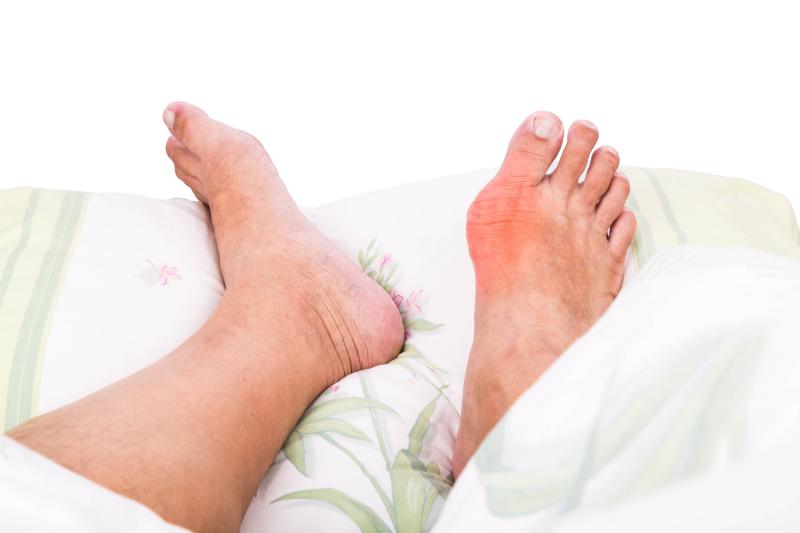
Amlodipine is more effective than lisinopril or chlorthalidone in reducing the long-term risk of gout in older adults with hypertension, according to the ALLHAT* study.
“This finding may be useful in cases where gout risk is a principal concern among patients being treated for hypertension,” the investigators said.
This randomized clinical trial examined the effects of first-step hypertension therapy with amlodipine, chlorthalidone or lisinopril on fatal coronary heart disease or nonfatal myocardial infarction (1994–2002). Trial participants were linked to CMS and VA gout claims.
Cox regression models were generated to determine the effect of drug assignment on gout. In addition, the investigators determined the adjusted association between self-reported atenolol use (ascertained at the 1-month visit for indications other than hypertension) and gout.
A total of 23,964 participants (mean age, 69.8 years; 45 percent women; 31 percent black) were linked to claims. Of these, 928 reported using atenolol at the 1-month visit. Overall, 597 gout claims were documented over a mean follow-up of 4.9 years.
Amlodipine use led to a 37-percent decrease in gout risk (hazard ratio [HR], 0.63, 95 percent confidence interval [CI], 0.51–0.78) compared with chlorthalidone and to a 26-percent reduction (HR, 0.74, 95 percent CI, 0.58–0.94) compared with lisinopril.
Treatment with lisinopril reduced gout risk, albeit nonsignificantly, compared with chlorthalidone (HR, 0.85, 95 percent CI, 0.70–1.03). Atenolol use did not correlate with gout risk (adjusted HR, 1.18, 95 percent CI, 0.78–1.80). Furthermore, gout risk reduction was observed after 1 year of follow-up.
“Gout is a common complication of blood pressure management and a frequently cited cause of medication nonadherence,” the investigators said.
*Antihypertensive and Lipid-Lowering Treatment to Prevent Heart Attack Trial